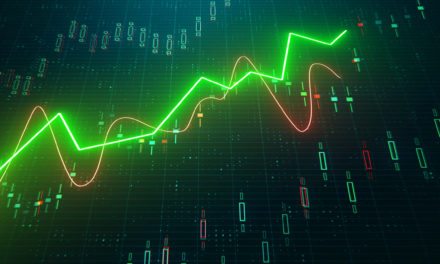
“I buy on the assumption that they could close the market the next day and not reopen it for five years.”
— Warren Buffett
The wisdom of Warren Buffett reflects a value-based philosophy about investing that says investors are buying shares in a business, and encourages strategic thinking about investment time horizon. Before placing a buy order for a stock, a great question we can ask is whether we would still be comfortable making the investment if we couldn’t sell it for many years?
A “buy-and-hold” approach may call for a time horizon that spans a long period of time — maybe even lasting for a five year holding period. Suppose such a “buy-and-hold” investor had looked into buying shares of TE Connectivity Ltd (NYSE: TEL) back in 2014. Let’s take a look at how such an investment would have worked out for that buy-and-hold investor:
| Start date: | 10/13/2014 |
|
|||
| End date: | 10/10/2019 | ||||
| Start price/share: | $51.47 | ||||
| End price/share: | $88.07 | ||||
| Starting shares: | 194.29 | ||||
| Ending shares: | 215.08 | ||||
| Dividends reinvested/share: | $7.66 | ||||
| Total return: | 89.42% | ||||
| Average annual return: | 13.64% | ||||
| Starting investment: | $10,000.00 | ||||
| Ending investment: | $18,938.77 | ||||
The above analysis shows the five year investment result worked out quite well, with an annualized rate of return of 13.64%. This would have turned a $10K investment made 5 years ago into $18,938.77 today (as of 10/10/2019). On a total return basis, that’s a result of 89.42% (something to think about: how might TEL shares perform over the next 5 years?). [These numbers were computed with the Dividend Channel DRIP Returns Calculator.]
Notice that TE Connectivity Ltd paid investors a total of $7.66/share in dividends over the 5 holding period, marking a second component of the total return beyond share price change alone. Much like watering a tree, reinvesting dividends can help an investment to grow over time — for the above calculations we assume dividend reinvestment (and for this exercise the closing price on ex-date is used for the reinvestment of a given dividend).
Based upon the most recent annualized dividend rate of 1.84/share, we calculate that TEL has a current yield of approximately 2.09%. Another interesting datapoint we can examine is ‘yield on cost’ — in other words, we can express the current annualized dividend of 1.84 against the original $51.47/share purchase price. This works out to a yield on cost of 4.06%.
More investment wisdom to ponder:
“If you’re looking for a home run, a great investment for five years or 10 years or more, then the only way to beat this enormous fog that covers the future is to identify a long-term trend that will give a particular business some sort of edge.” — Ralph Wanger




